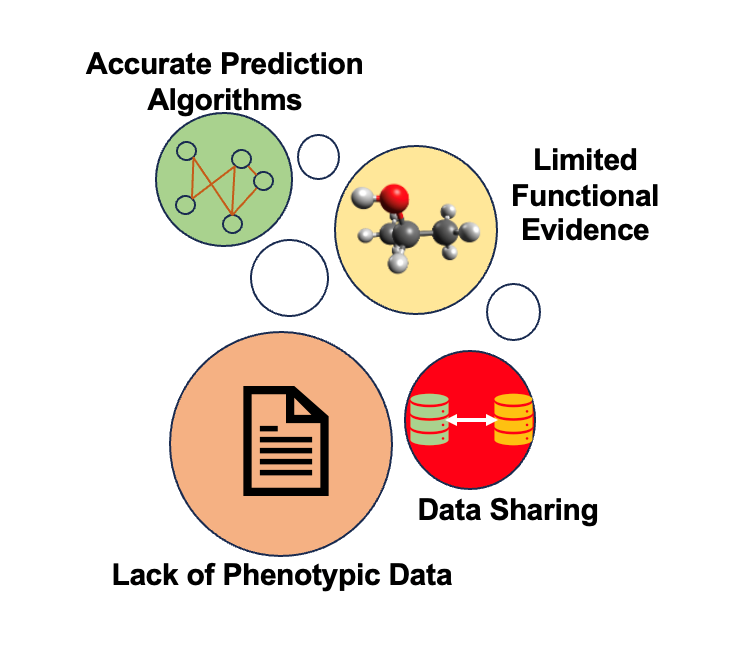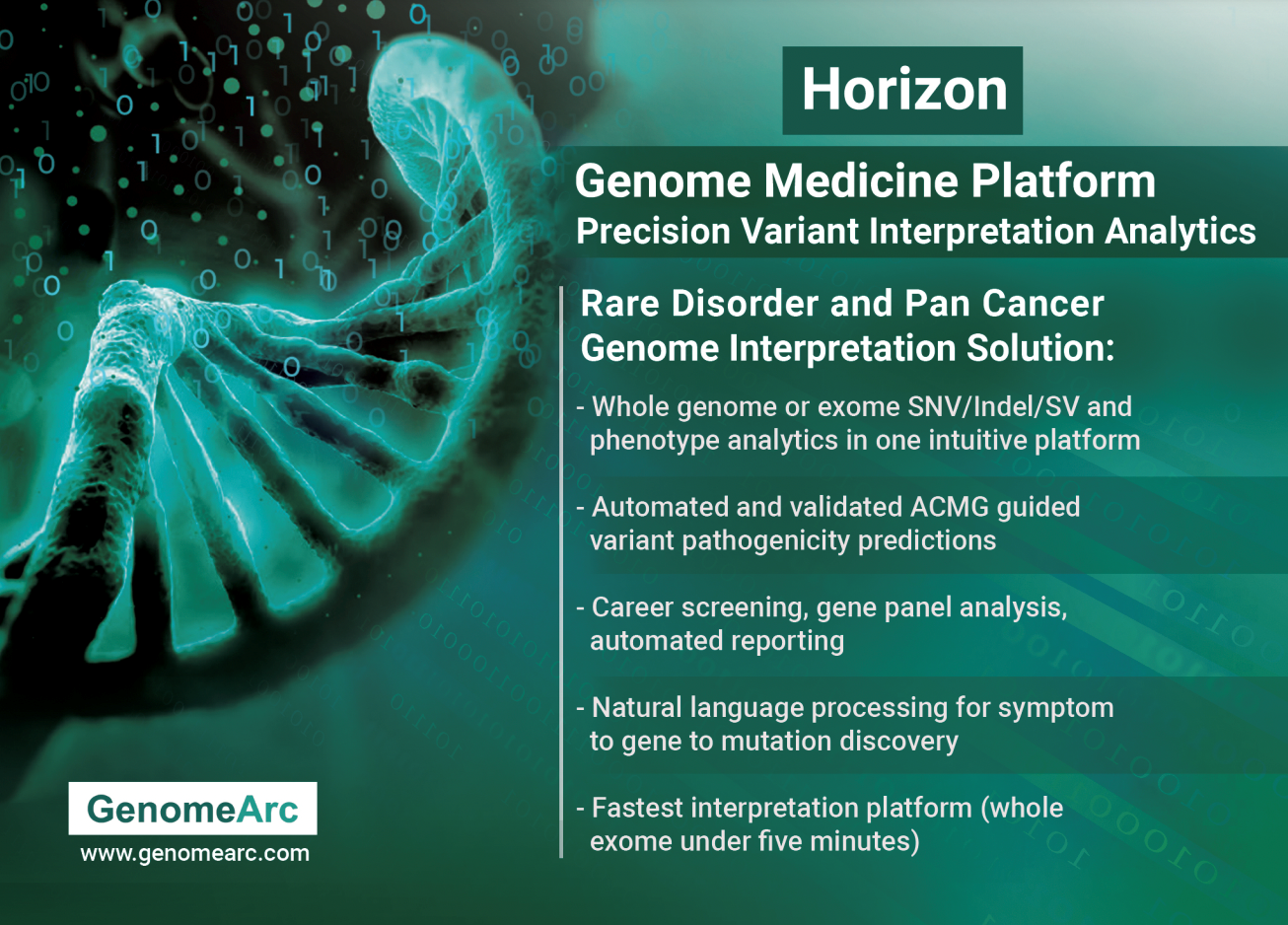
Horizon’s Quest on Resolving Variant of Uncertain Significance (VUS)
The average human genome encompasses over 4 million variants, impacting a vast array of more than 20,000 protein-coding genes. Unraveling the significance of each variant in human diseases, traits, and the origin of species is a long quest. Laboratory geneticists adhere to guidelines that consider clinical information, population allele frequency, in silico projections of molecular effects, and other evidence to assess the association of a variant with a particular disease [1]. Classifying these variants into binary ‘pathogenic’ or ‘benign’ for clinical implications is extremely important. In each human genome we carry a lot of rare variants, and it is not easy to define such variant’s role for a disease. A cohort of pediatric genetic diseases show as high as 50% of the cases can have rare structural variants (SVs) classified as VUS [2]. From Invitea Corporation, a large cohort of 1,689,845 cases with multi gene panel sequencing shows 41% cases carry a VUS [3]. Clinical geneticists, doctors and genetic counselors find it extremely hard to interpret VUS results to patients.
The VUS Problem
The complexity of a VUS is multiple folds, and our research shows there three primary reasons why it is hard to resolve VUS.

How to resolve VUS? What are the possible solutions?
Addressing Variants of Uncertain Significance (VUS) holds immense value and has the potential to substantially enhance diagnostic yield. The invitae gene panel study highlights the effectiveness of their reclassification efforts, interestingly identifying approximately 80% of variants as non-pathogenic/benign. While this outcome is promising, it is crucial to ascertain the sensitivity and specificity of VUS reclassification in comparison to whole exome and genome studies.
From GenomeArc, there was a public poll asking clinical geneticists, what is the most important issue resolving VUS, providing the options to vote: ‘Data Sharing’, ‘Prediction Algorithm’ and ‘Lack of Phenotype Data’. The overwhelming majority (over 40%) voted for ‘Lack of Phenotype Data’ as the major issue resolving VUS. The main issue with reclassifying VUS is time to gather more comprehensive, well phenotyped and accurately curated genomic data. Although access to such data set is rare, some recent initiatives like UK Biobank, providing a path to access datasets [4]. A collective effort to train prediction algorithms with highly accurate data, and updated variant reporting databases from all across the world is a way forward but requires a dedicated team with multi-year analytical commitments.
One platform at the forefront of resolving VUS variants is the genomic medicine platform developed by GenomeArc, Horizon.
Horizon demonstrates powerful abilities in recalling and resolving most of the clinically relevant structural variants. Through combining different factors to increase the accuracy of variant classification, the platform increases the capacity for variant interpretation. A significant part of this is the huge amount of data incorporated into Horizon’s databases from diverse multi-ethnic populations and a variety of diseases. Different ethnicities are reporting population specific variants that may not have any presence in another population. That’s why GenomeArc’s global partnerships with many clinics allows continuous updates about clinical genomics variants and empowers its algorithms to predict variants from major ethnic backgrounds.
On the other hand, the platform includes a unique language model for phenotype analysis. This is a major issue in VUS resolution due to the effect it has on the interpretation process. The utilization of this large language model within Horizon’s PhenoGene module helps integrate patients’ phenotypes or symptoms with genomes providing a comprehensive analysis.
The company strives to update Horizon’s databases at a regular pace to keep up with the reclassification efforts and novel reported variants across the globe. This is due to the research-intensive nature of the company allowing it to understand the critical need to stay up to date with discoveries. A team of variant curation scientists and geneticists manage Horizon’s clinical variant databases through clinical partners and scientific literature. Such is an initiative to combine data in a diverse and accurate manner with proper representation across various populations. All these factors contribute to the efforts in resolving VUS variants.
“Resolving VUS with utmost accuracy is one of primary goal for Horizon. This is not a one-off solution, rather we will keep empowering Horizon with multiple algorithms and highly precise clinical genomic databases” said Mohammed Dafil, founder, and CEO of GenomeArc. Horizon is an all-in-one clinical genomics solution that predicts variants classification for rare disorders, cancer and liquid biopsy for all classes of variants (i.e. SNVs, Indels, SVs).

The Future:
On a global scale, medical clinics are embracing human genome sequencing as a pivotal diagnostic tool for detecting rare genetic diseases and pan cancer. The future appears optimistic, given the increasing availability of extensive clinical genomes and phenotypic data for the classification of genetic variants. By integrating CRISPR and mRNA technologies, we can boost screening capacities on a broad scale, facilitating a systematic molecular analysis of VUS. Multiple algorithms are poised to integrate large genomic and functional datasets to elucidating the intricate nature of human genome variants within these complex classes, i.e. VUS.
References:
GenomeArc Inc. is a biotech company on clinical genetics and drug discovery headquartered in Mississauga, Ontario. The company began its journey in 2021, GenomeArc develops artificial intelligence integrated solutions for genetic diagnosis and genomic drug development solutions for rare genetic disorders and pan cancer. As a research-oriented biotech company, GenomeArc brings new insights into rare diseases, cancer diagnosis, and therapeutics through genome analysis. The GenomeArc team is constantly innovating technologies to solve phenotypic complexities in genetic variations for rapid intervention. As a global company, our aim is to make efficient and accurate genome medicine technologies accessible for all healthcare systems.
See more Blogs: